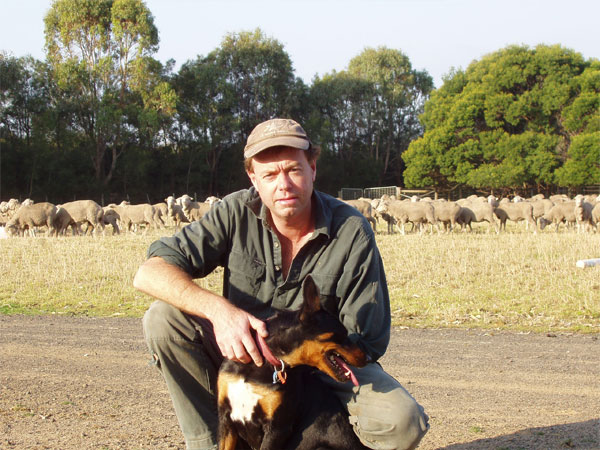Sustainable grazing systems are vital for productivity
Developing a profitable and sustainable grazing system has been a cornerstone of the Woady Yaloak Catchment Project near Ballarat in Victoria.
Since 1993 the Woady Yaloak Catchment Group has invested significant effort on activities to improve pastures in the district, including programs on pasture resowing, soil testing, fertiliser and lime trials, manipulation through herbicide application and sub divisional fencing.
In the first phase from 1993 to 1997, over 4,000 hectares of deep rooted perennial pasture were sown, with a further 30,000 ha established over the next decade. Farmers in the catchment have also taken over 1,200 soil tests to refine inputs of fertiliser, lime and gypsum.

Project manager and farm consultant Cam Nicholson.
A study of the two decades of soil tests showed a massive change in soil condition, especially improvements in phosphorus, potassium and acidity. The investment by farmers in lime and fertiliser to achieve these changes was calculated at $28.5 million.
Productive solutions
Current chairman of the Woady Yaloak Catchment Group, Werneth farmer Evan Lewis, believes combining productivity and natural resource management is the only way to go.
“We need to find solutions that continue to improve the bottom line while also having benefit to the environment,” Evan said. “Improving our grazing system is one of those solutions.”
Evan is examining the use of cover crops as part of crop rotation to improve fodder production, but also to provide year-round green material for the soil biology to feed on.
Grazing system
But the method of grazing is only part of a sustainable system, according to farm consultant Cam Nicholson.
Cam is the project manager for the Woady Yaloak Group and has provided pasture advice to farmers in the Catchment since the project started.
“There are three components to a sustainable grazing system,” Cam said. “The first is getting the soil conditions right, especially the pH of the soil through liming and applying the right balance of nutrients based on soil testing. The second is favouring the right species, either through sowing or by managing weeds to give the plants you want a competitive edge.”
The last component is how you graze the pasture.
Grazing management
Danny Laffan and his family have dramatically changed their approach to grazing since taking over their property in the early 1990’s. Mt Mercer beef producer and Woady Yaloak member, Danny has erected many kilometres of fencing on the property to enable them to graze and spell paddocks.
“All plants need a period to recover after grazing, to replenish the reserves they use to grow back from,” Danny said. “If you don’t have enough paddocks you can’t provide this period of spelling. Fencing gives us control over where the animals graze.”
The Laffans have also undertaken a major pasture resowing program, applied fertiliser and lime as well as a revegetation program, using the subdivisional fencing as part of the tree plantations.
Information on the soil testing program, fertiliser and lime trials and report on the cover cropping study tour can be found at www.woadyyaloak.com.au



